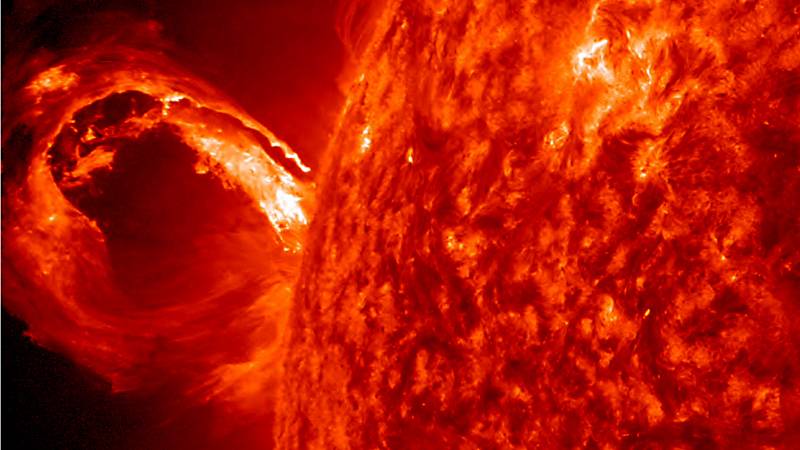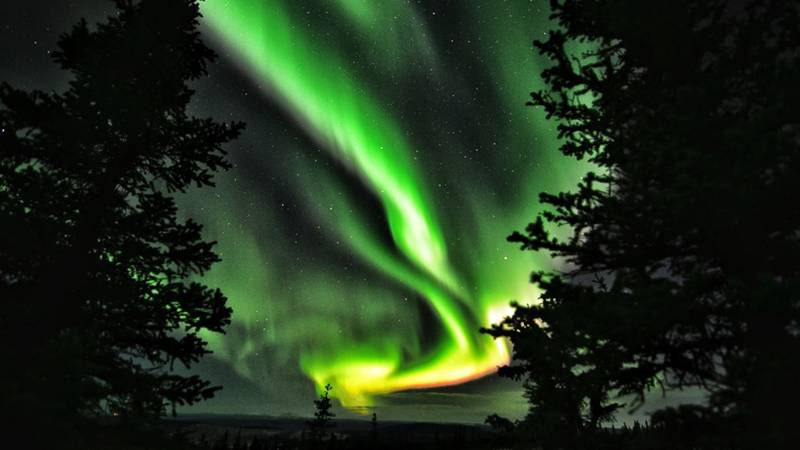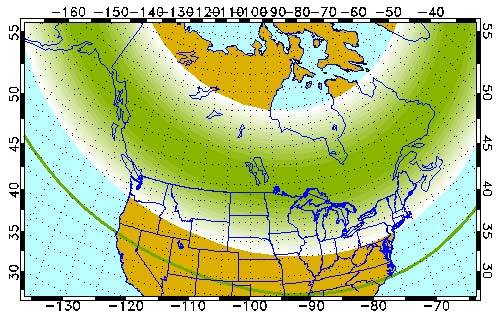
ASHEBORO N.C. – Four explosions on the surface of the sun have sent waves of charged particles flying through space resulting in a geomagnetic storm and auroras tonight.
The National Oceanic and Atmospheric Association (NOAA) operates the Space Weather Prediction Center (SWPC) which is tasked with providing space weather forecasts and alerts.
On Wednesday, November 29th, 2023, the Space Weather Prediction Center issued an alert that a fast moving coronal mass ejection (CME) could combine with three other CMEs already headed towards Earth, resulting in one larger geomagnetic storm, which is expected to impact the Earth in the tonight and into the early morning hours on December 1st, 2023.
According to the NWS, Coronal mass ejections (CMEs) “are giant blobs of plasma which erupt from the Sun. When a CME slams into the Earth’s magnetic field, the interaction of the magnetic fields and charged particles hitting the Earth’s magnetic field can result in geomagnetic storms and colorful lights in the sky called auroras, also known as the ‘northern lights.’

The NWS says “rare but significant storms can lead to blackouts, such as the 1989 event that plunged Quebec into darkness for nine hours. Most of the time, however, geomagnetic disturbances are much less dramatic and easily dealt with by power grid operators.”
These storms are classified using a five-level NOAA Space Weather Scale. The Space Weather Prediction Center says the storm expected tonight is rated as G3 (Strong), which could require voltage corrections by power companies who operate the grid, cause protection devices on the grid to trip (much like a circuit breaker), and cause intermittent satellite and radio signal disruptions.
According to the Geophysical Institute, University of Alaska Fairbanks, auroras may be visible as far south as Raleigh, weather permitting. Solar activity is expected to start as soon as 5 p.m. this evening and reach its peak around 2 a.m. December 1st.

Most forecasters agree that any auroras as far south as North Carolina will likely not be visible to the naked eye.
The Sun’s magnetic field goes through 11-year cycles. Tonight’s geomagnetic storm comes as the sun is getting near the peak of its current solar cycle (cycle 25).
Several solar storms earlier this month brought auroras as far south as North Carolina maily being visible in the mountains resulting in this photo captured by Ezekiel Coppersmith over Waynesville, NC, shared to Twitter by WPDE ABC-15 Chief Meteorologist, Ed Piotrowski.
One of the most epic shots you’ll ever see of the #northernlights and the #MilkyWay This was over Waynesville, NC last night. Thanks for the photo Ezekiel Coppersmith. #scwx #ncwx pic.twitter.com/t1lWFfE2Py
— Ed Piotrowski (@EdPiotrowski) November 6, 2023
Links / Learn More
- You can watch the auroras from the All Sky Camera located at Poker Flat Research Range, AK, operated by the Geophysical Institute here.
- You can view the 30 minute aurora forecast from the Space Weather Prediction Center here.
- Learn more about space weather here.

